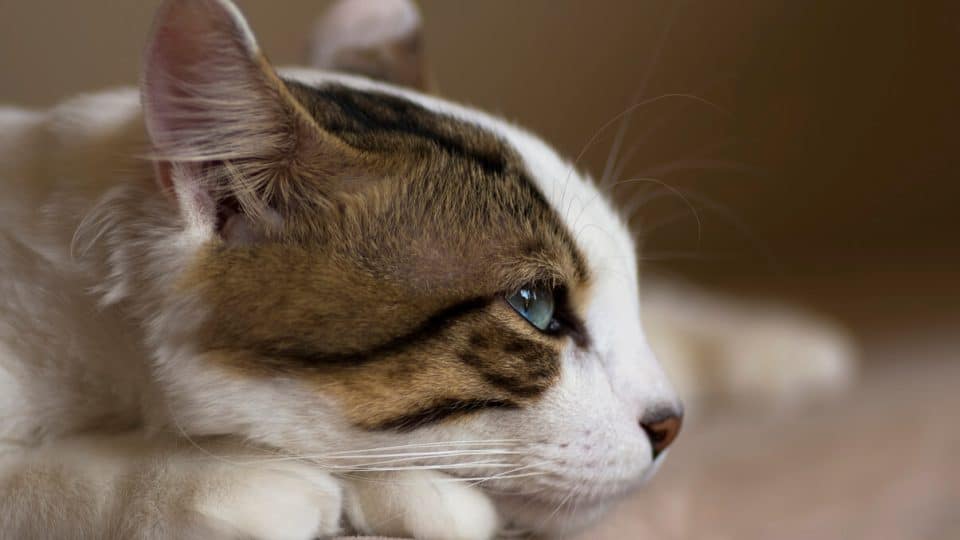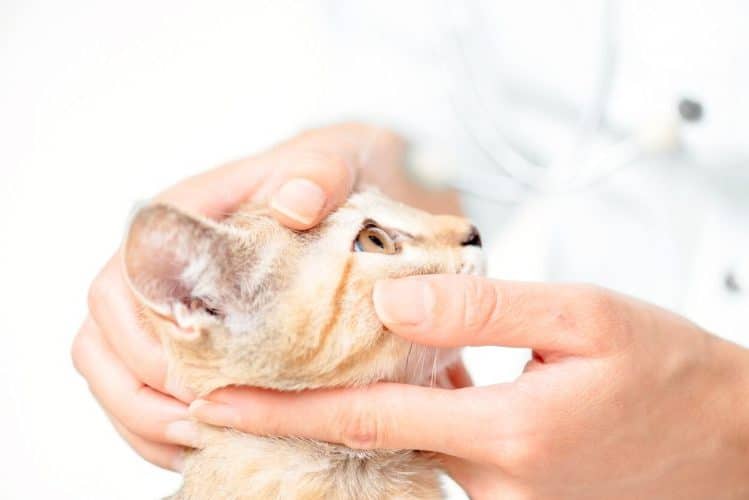Horner’s syndrome is a neurological disorder than can affect cats and dogs alike. It causes symptoms that affect the eye on one side of the face, along with the ear and nose.
This condition can develop in cats of any breed, up to the age of 14. Around 40% of documented cases of Horner’s syndrome in cats are idiopathic, which means the cause remains unknown. It’s considered a syndrome, not a disease, because the symptoms don’t have a definite cause.
“In most cases, Horner’s syndrome in cats isn’t painful and typically resolves without treatment, says Dr Alex Schechter, a veterinarian and founder of Burwood Veterinary in the USA. He adds, though, that it’s crucial to address any underlying health concerns that may have triggered the condition. Treating the underlying cause can help manage their symptoms.
Below, get the details on Horner’s syndrome in cats, including key signs, possible causes, and when to get treatment.
What Are The Signs Of Horner’s Syndrome?
This condition mostly affects a cat’s eye, which includes the pupil, eyelid, and eyeball.
You may notice the following signs:
- Shrinking of the pupil (miosis). The most commonly recognised symptom is the appearance of a shrunken, or constricted, pupil. This happens because Horner’s syndrome can prevent the eye muscles from contracting and dilating as they should.
- Cherry eye (third eyelid protrusion). Third eyelid protrusion means the nictitating membrane, or third eyelid, has become more visible than usual. This is the second most commonly reported clinical sign of Horner’s syndrome.
- Drooping of the upper eyelid (ptosis). Ptosis causes the affected eye to appear more narrow than the other eye. This may happen because Horner’s syndrome can prevent muscles from controlling the eyelid.
- Sunken eye (enophthalmos). This refers to the sinking of the eyeball back into the orbit, or eye socket. It may seem as if your cat is squinting.
- Vascular effects. In some cats, Horner’s syndrome may widen the blood vessels. This can cause red and warm ears and increased blood flow in the nose and lining of the eyelid.
Can these symptoms have another cause?
Only a vet can determine whether your cat has Horner’s syndrome or another condition that affects the eye and causes similar symptoms.
If your vet rules out Horner’s syndrome, it’s possible your cat could have one of the following conditions:
- iris atrophy
- glaucoma
- Adie’s syndrome
- cavernous sinus syndrome
- uveitis
- endophthalmitis
- panophthalmitis
- ulcerative keratitis
Causes Of Horner’s Syndrome In Cats
Damage to the sympathetic nervous system can cause lesions on the brain and spinal cord and lead to Horner’s syndrome.
The sympathetic nervous system is responsible for involuntary functions associated with ‘fight or flight’ instincts, including pupil dilation, sweating and blood pressure regulation, Dr Schechter explains.
Both the sympathetic and parasympathetic systems can affect the pupil, preventing the eye muscles from contracting and dilating.
Examples of possible triggers of Horner’s syndrome in cats include:
- Trauma. Injuries to the spine, neck or head can lead to Horner’s syndrome. This kind of trauma affects the eyes since the sympathetic nerve fibres control eye function. Trauma can occur from car accidents, bite wounds from another animal, or certain surgeries, like thoracic surgeries and bulla osteotomies. In fact, bulla osteotomies raise the risk of Horner’s syndrome.
- Tumours. A tumour may point to a disease that affects the nerve fibres in the brain, brain stem or spinal cord.
- Blood clots. An abnormal blood clot (infarction) in the spinal cord may cause a lesion that affects typical function and causes Horner’s syndrome.
- Middle ear infection. Inflammation in the middle ear, where some of the nerves of the face travel, can lead to Horner’s. Ear inflammation and infection that goes untreated can also lead to imbalance and deafness.
- Eye diseases. Certain eye conditions, such as keratitis, glaucoma, and conjunctivitis, can cause symptoms associated with Horner’s syndrome.
Is Treatment Needed For Horner’s Syndrome In Cats?
Treatment for Horner’s syndrome is typically only necessary if the symptoms become severe or your vet identifies an underlying medical condition, Dr Schechter says.
Even so, if you’ve noticed signs of Horner’s syndrome in your cat, you’ll want to start by making an appointment with your vet. Dr Schechter emphasises the importance of getting the right diagnosis, since this condition can suggest an underlying problem that does require treatment, including:
- an eye injury or trauma
- a tumour
- infection or inflammation
- an autoimmune disorder
“The specific treatment approach varies depending on the underlying cause,” he explains. “For instance, eye injury-related cases may require surgical intervention, while tumour-induced cases may involve tumour removal through surgery.”
Dr Schechter says the condition doesn’t usually affect vision or cause pain. In some cases, it may cause vision problems, like double vision or decreased peripheral vision. He does emphasise, though, that it’s not common for cats with Horner’s syndrome to have vision problems.
You can talk to your vet about topical medications, like phenylephrine drops, to dilate the affected pupil. That said, this treatment mostly has cosmetic benefits only, so pet insurance may not cover it.
Outlook: Can Cats Recover From Horner’s Syndrome?
Your cat’s chances of recovery depend on the underlying cause.
Up to 25% of cats will have Horner’s syndrome permanently if they develop the condition after a bulla osteotomy, while cats who develop Horner’s syndrome after thoracic surgery often improve. Horner’s syndrome in cats caused by an infectious disease often resolves as the disease does.
Some cats experience partial recovery from symptoms like eyelid drooping and sunken eye but still have a shrunken pupil. However, these effects remain mostly cosmetic and generally won’t affect your cat’s quality of life.
“It’s natural to worry when something like Horner’s syndrome occurs,” Dr Schechter says. “Please know that in the majority of cases, Horner’s syndrome in cats is not a serious condition and often resolves on its own within a few weeks.
Of course, every cat is unique, and you know your cat best! If you notice severe symptoms or think your cat could have an underlying health issue, Dr Schechter says seeking professional advice is always the best course of action.




